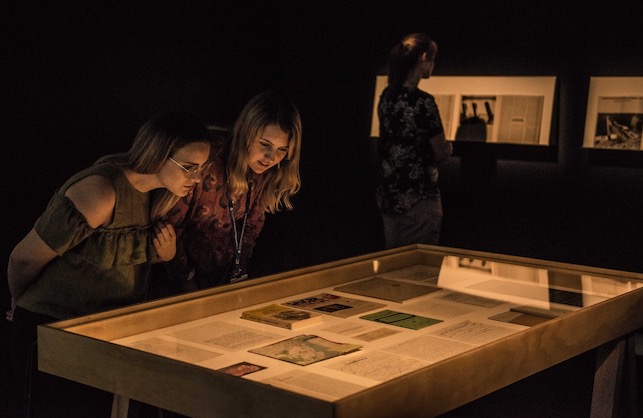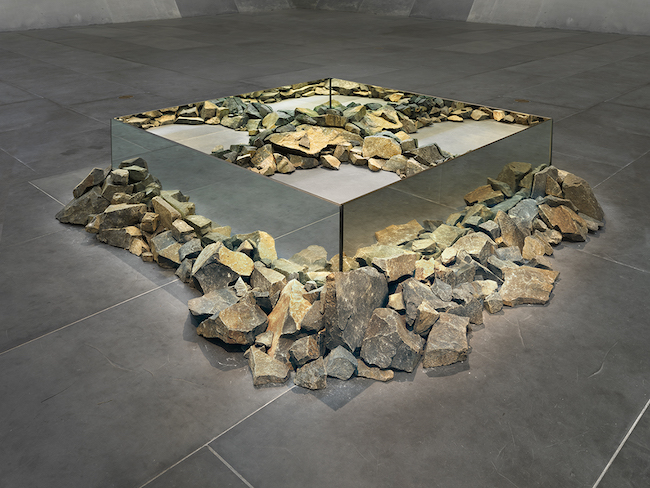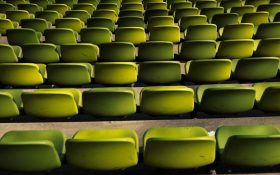While many will recognise the American land artist Robert Smithson’s Spiral Jetty (1970) in Great Salt Lake, Utah, USA, most will know less about his preoccupations with time, crystalline geometry, geology, the history of art and science fiction.
Robert Smithson’s diverse but intersecting conceptual and material explorations continue to feed the practice of current contemporary artists. A new exhibition, Robert Smithson: Time Crystals, now showing at the University of Queensland Art Museum, profiles Smithson’s ‘ruminations on time’ that manifest in his ‘labyrinthine logic’, as described by Campbell Gray in the exhibition’s catalogue.
Visitors to the gallery can expect to play with, explore, read and imagine aspects of frozen time through Smithson’s work. They will also have the opportunity to view Smithson’s 16mm film (digitally transferred) documenting the construction of Spiral Jetty (1970).
In this week when Stephen Hawking has died, there is a question about what Smithson might have made of this giant and his thinking. Smithson died in a plane crash in 1973 while surveying a prospective land work in Amarillo, Texas.
Best known for his radical land art of the 1960s and early 1970s, Smithson is now widely recognised as one of the most influential artists of the twentieth century
In Robert Smithson: Time Crystals, which has been developed in partnership with Monash University Museum of Art (MUMA), Australian audiences will encounter film, sculptural works, texts, photography, slides, and drawings that touch on Smithson’s boundless thinking.
Visitors to the exhibition will also be able to engage with references he found influential – texts on mineralogy, contemporary science fiction, including J. G. Ballard, and visual material. These documents provide an extensive context for reflecting on all his theoretical projects, installations and land artworks.
Much of this archival material has been drawn from the Robert Smithson and Nancy Holt papers at the Smithsonian Institution Archives of American Art. Works have also been made available by Australian and overseas collections.

Image courtesy UQ Art Museum; Photo Simon Woods
In their catalogue essay, the curators Amelia Barikin and Chris McAuliffe have foregrounded Smithson’s preoccupations. He talks of ‘a sense of the crystalline’ or ‘mineral presence’ – think reflective surfaces and structures in suburbs and cities. They go on to speak about Smithson’s interest in ‘deep geological time’ in the presence of ‘creeping decrepitude’ of debris and cracked stone – think discarded materials, quarries and salt lakes.
At the opening event, people were queuing to face the wall work Enantiomorphic Chambers (originally 1965; exhibition copy 1999). The title alludes to the crystalline qualities of mirror images. In Stephen Melville’s catalogue essay he describes it as, ‘a perverse stereoscope in which what the two eyes see in the mirrors left and right is not a fully realized, unified central illusion but its distinct absence, the two images not fusing but cancelling out one another.’
Smithson perceived this sense of absence in reflection in his encounters with contemporary cities.

Robert Smithson Rocks and Mirror Square II (1971), basalt rocks and mirrors 36 x 220 x 220cm; Collection National Gallery of Australia, Canberra Purchased 1977, © Holt-Smithson Foundation/VAGA. Licensed by Viscopy, 2017
One gentlemen, on hands and knees, was studying the visual contradictions of Smithson’s, Rocks and Mirror Square II (1971). This work, purchased by the National Gallery of Australia, Canberra in 1977, is on show in Brisbane only.
A similar temporary work, Fossil Quarry Mirror (1969) was made, and photographed in construction, on site. This documentation has been included in the exhibition. This land artwork of Smithson’s, engaged as it was with (and reflecting) ancient geology, was made at a time when man was landing on that big ancient rock, the moon.
Another photo work is Yucatan Mirror Displacements 1-9 (1969) in which mirrors were temporarily placed on site in the Yucatan jungle. As with his other site specific and documented works, Smithson challenged the viewer’s perceptions and expectations of time, materials, space and depth.

Robert Smithson Yucatan Mirror Displacements (1–9) (1969) (detail); The Solomon R. Guggenheim Museum, New York, Purchased with funds contributed by the Photography Committee and with funds contributed by the International Director’s Council and Executive Committee; Photo: The Solomon R. Guggenheim Foundation / Art Resource, NY © Holt-Smithson Foundation/VAGA. Licensed by Viscopy, 2017.
Smithson’s work liberated the artist’s practice from the confines of the gallery walls. In doing this, he also forged a new relationship to the gallery through the portability of the documentation.
The exhibition is significant, while being at the same time both dense and engaging. The catalogue, a joint collaborative production from Monash University Museum of Art and University of Queensland Art Museum, is a key element of the exhibition – a document that explores Robert Smithson’s conceptual drives in depth.
Smithson is the stuff of legends when it comes to the land art movement, and both exhibition and catalogue lead us through the artist’s land and mind labyrinths elegantly, and eloquently.
Rating: 4 out 5 Stars
Robert Smithson: Time Crystals
Curators: Dr Amelia Barikin (The University of Queensland) and Professor Chris McAuliffe (Australian National University)
UQ Art Museum
University of Queensland Art Museum, Brisbane
10 March – 8 July 2018
The exhibition will be touring to Monash University Museum of Art Melbourne in July.





